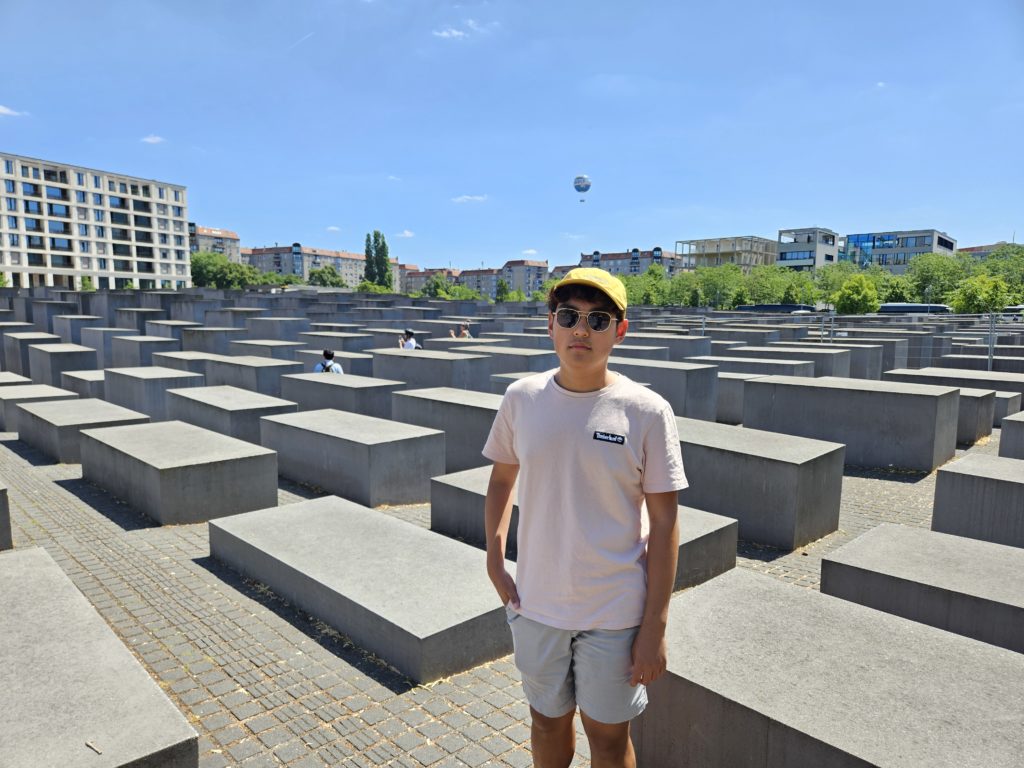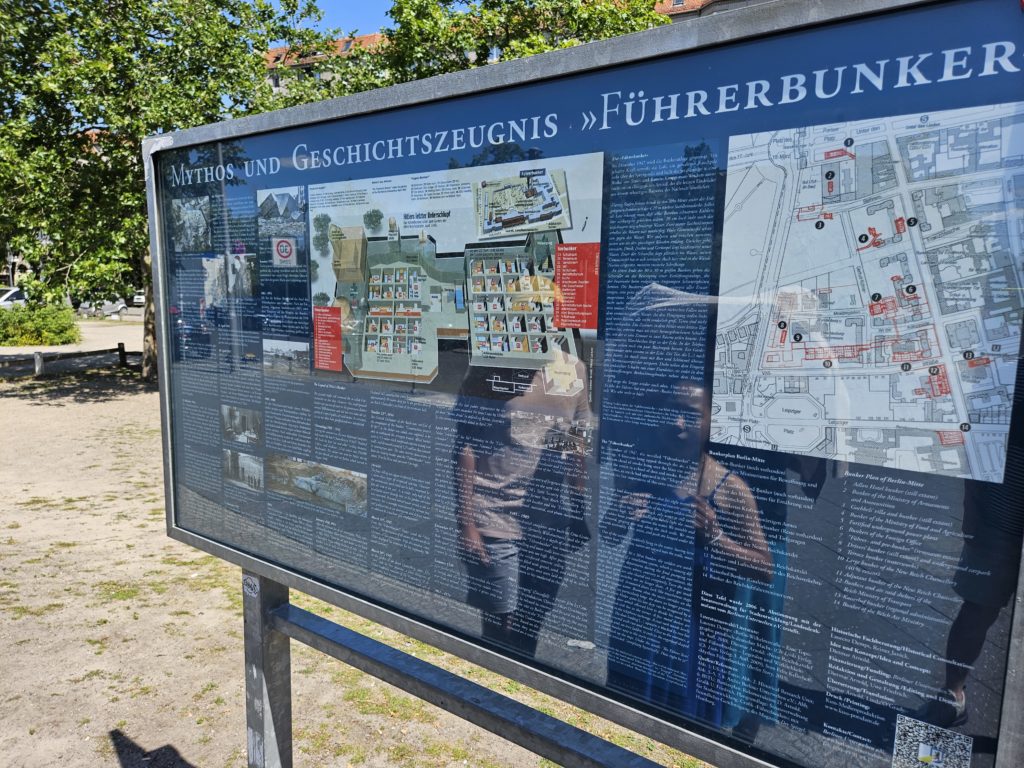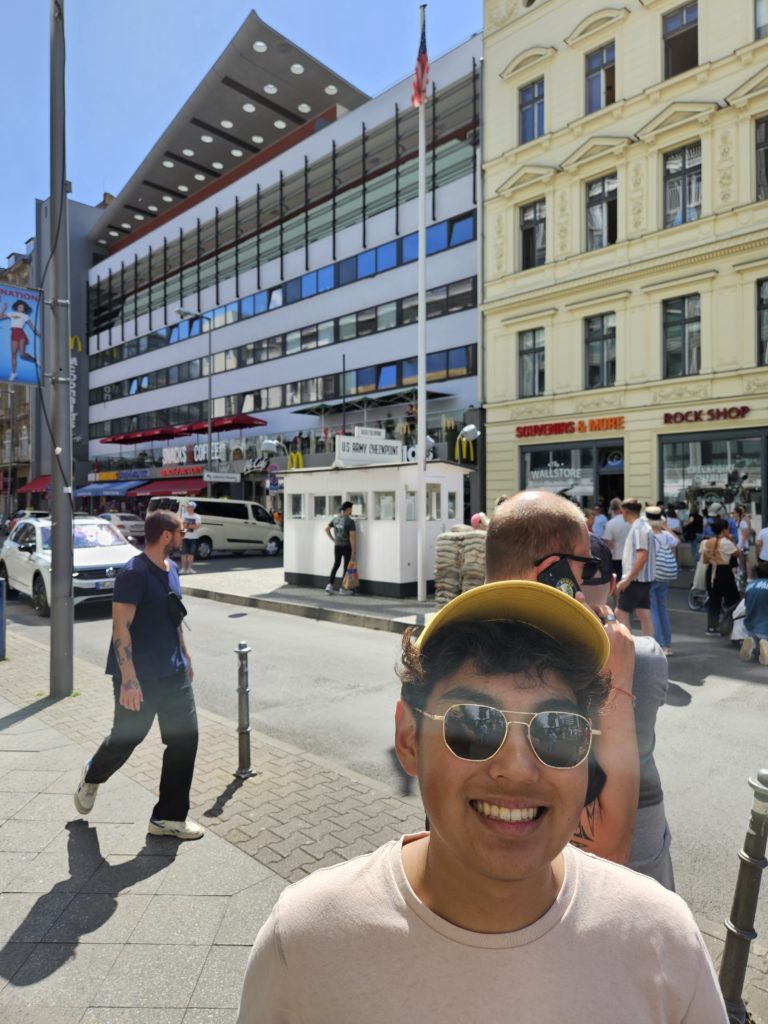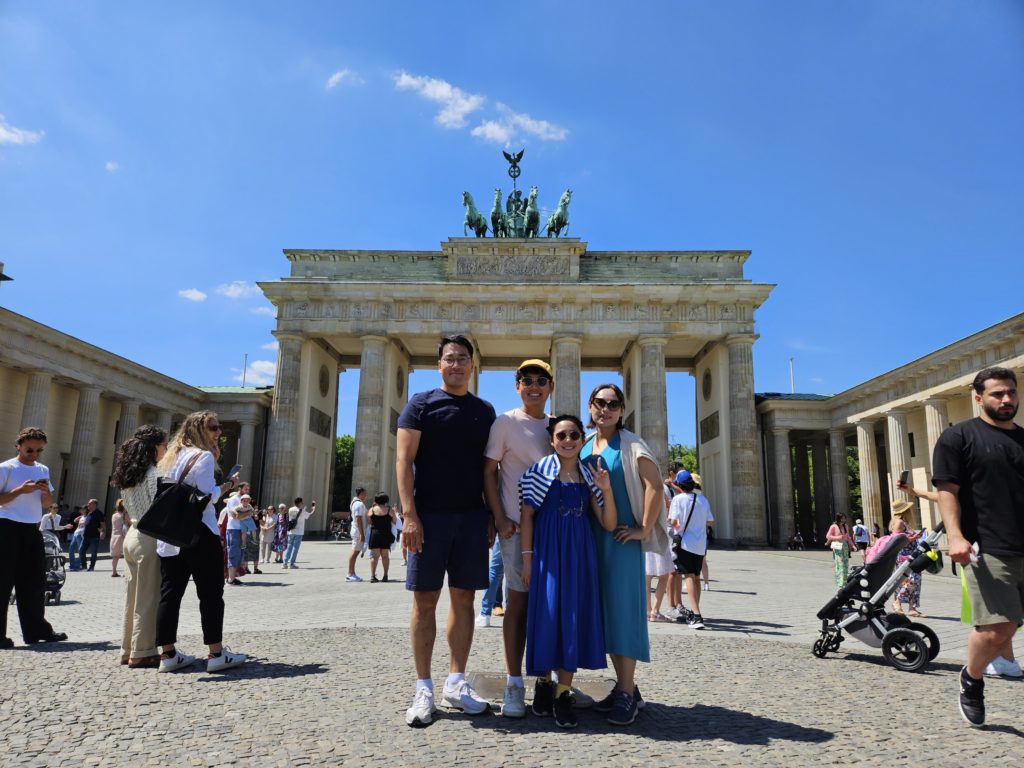The city of Berlin was full of places that today work as a reminder of the painful recent history of Germany: The fascist ruling of Hitler (the Third Reich) and the division of the country signified by the Berlin Wall. These remnants help constantly remind the Berliners of their history — their own suffering, as well as pain inflicted to many people by their government.
The Kaiser Wilhelm Memorial Church was one of the most powerful reminders of war. The church was significantly destroyed, and the Berliners decided to keep the demolished church as it is, rather than re-building or fixing it. They built new churches next to the destroyed church, but not with the same grandeur and splendor – the new churches are monotonous, nondescript gray concrete building, perhaps the message being that it’s not the splendor of the church that matters, as the buildings can be destroyed any time, just like the main church had been.
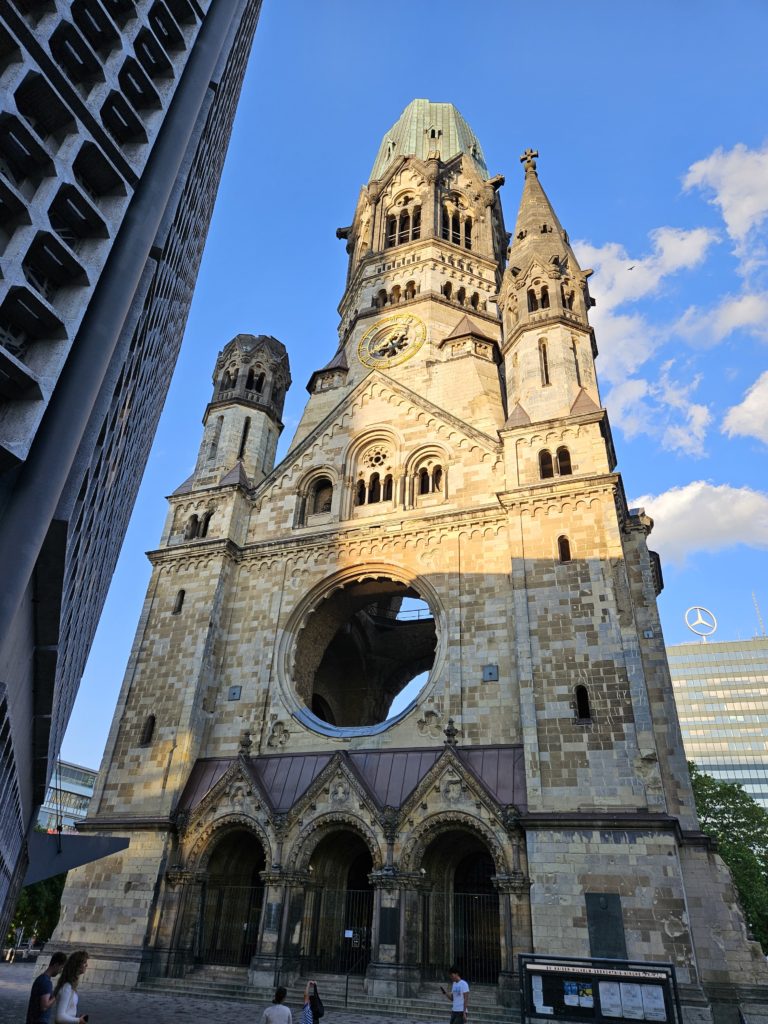
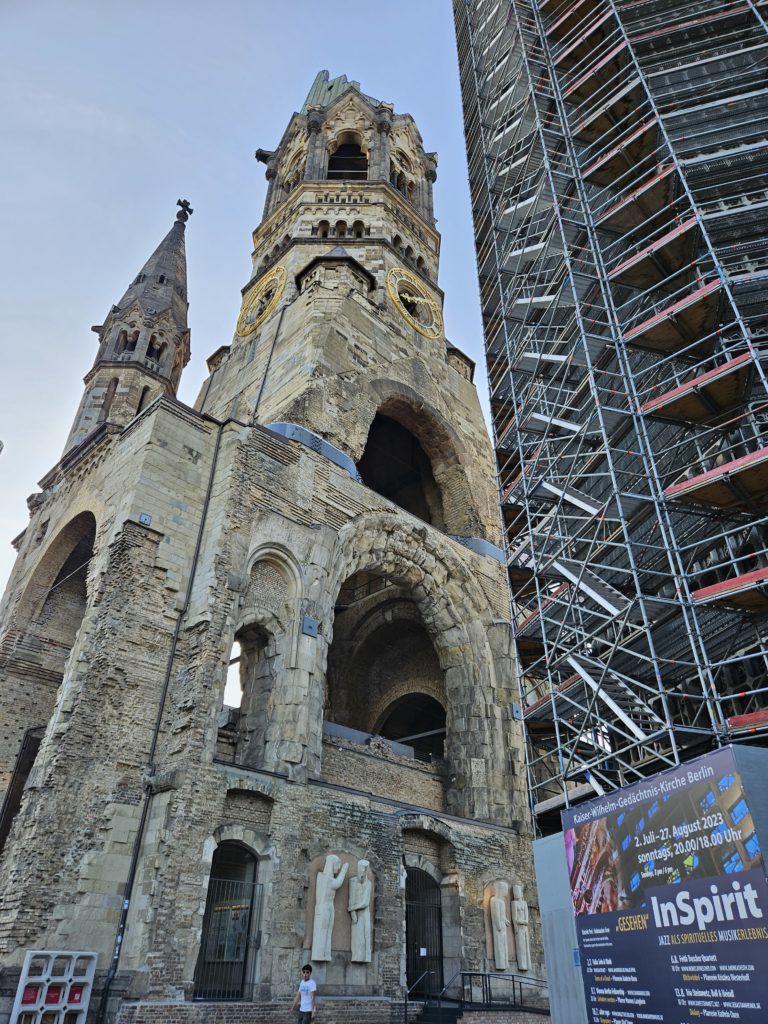
I felt as though Berliners have more acute sense of the general topic of wars (including the current War in Ukraines) than people in other cities we’ve visited; For example, I could see more Ukrainian flags hoisted on top of buildings in Berlin than in other cities we’ve visited as part of this trip.
At the Berlin Wall museum, we could see some of the remaining parts of the actual Berlin Wall and some footage including testimonials from Berliners who have witnessed the establishment and the demolition of the Wall, and those who jumped the fence from the East to the West. The footages were also showing the Berliners not fully grasping what’s going on and unsure about how to react when the first bits of the walls were getting erected (The Berlin Wall was set up rather gradually around 1961; first barbed wire, then the concrete wall and more fortifications – one can’t stand a concrete wall instantly; it takes days and weeks). It’s such an unthinkable thing that a man-made wall gets erected one day, completely artificially and arbitrarily, in the middle of a city where people have been mingling and living together for many, many years. That’s what wars and politics do.

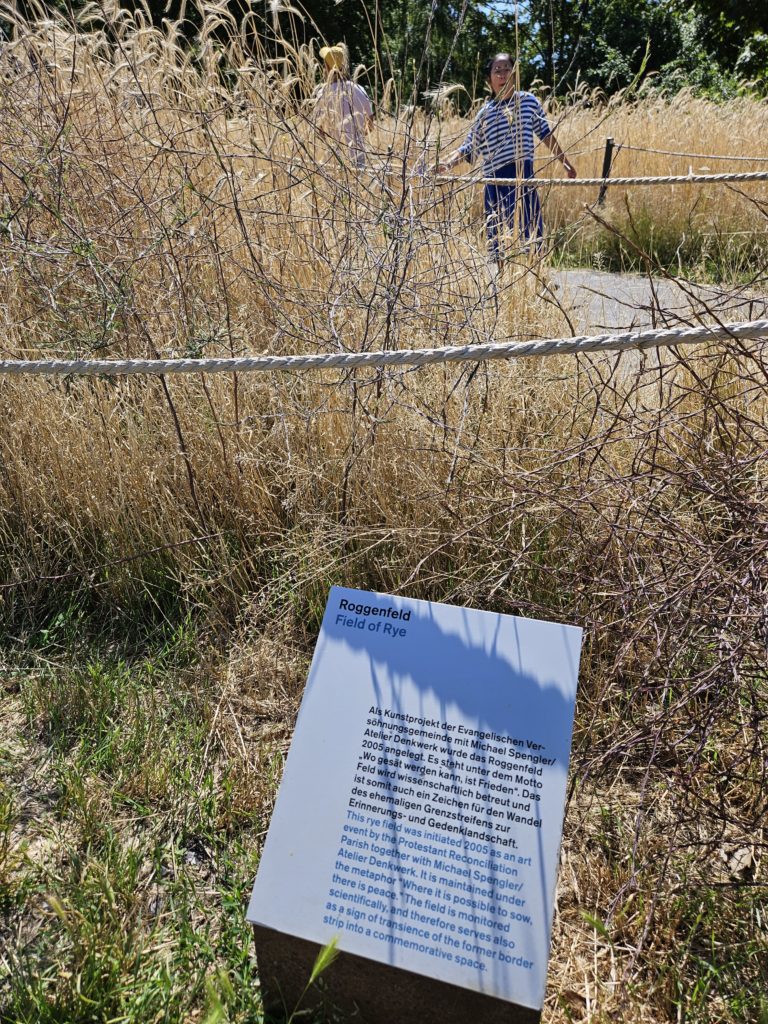
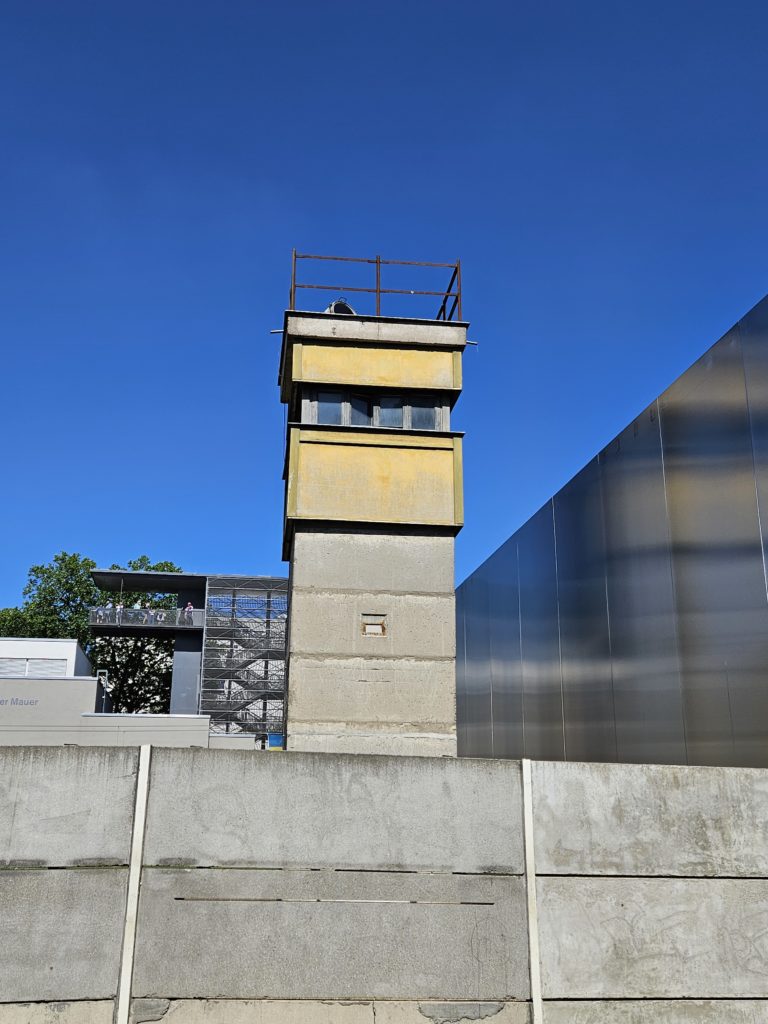
That could be one reason why the Reichstag (the German Parliament) added numerous glass windows, signifying transparency in politics and democracy. The building was significantly damaged during the world war, while the Dem Deutschen Volke (to the German people) inscription survived.

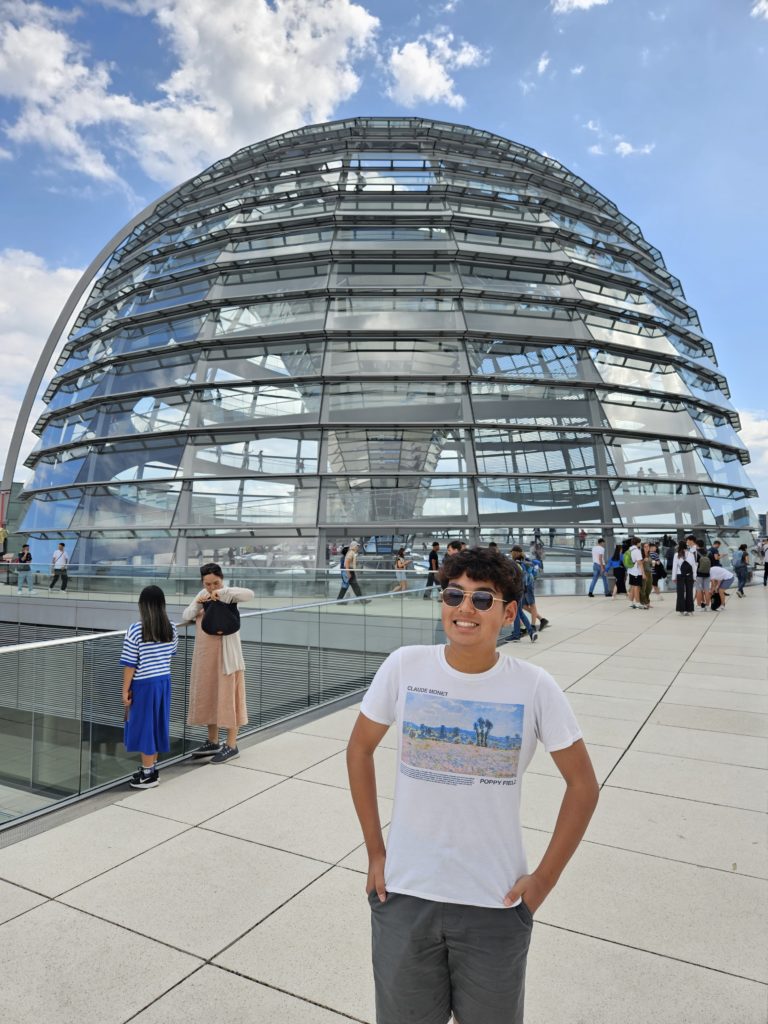
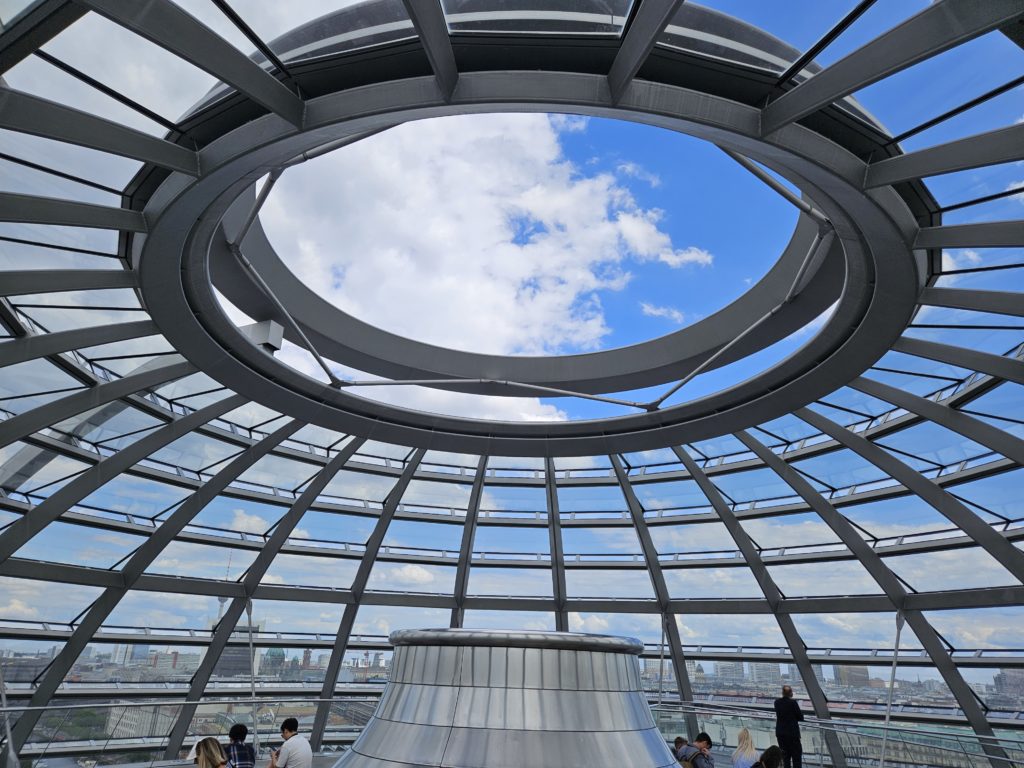
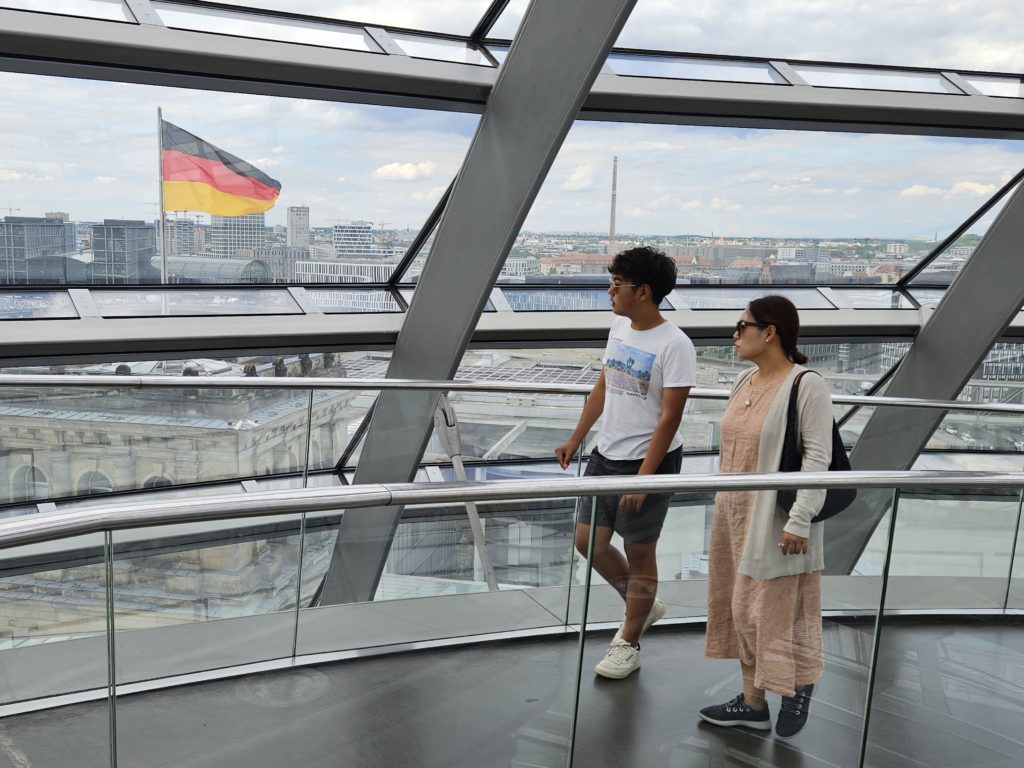
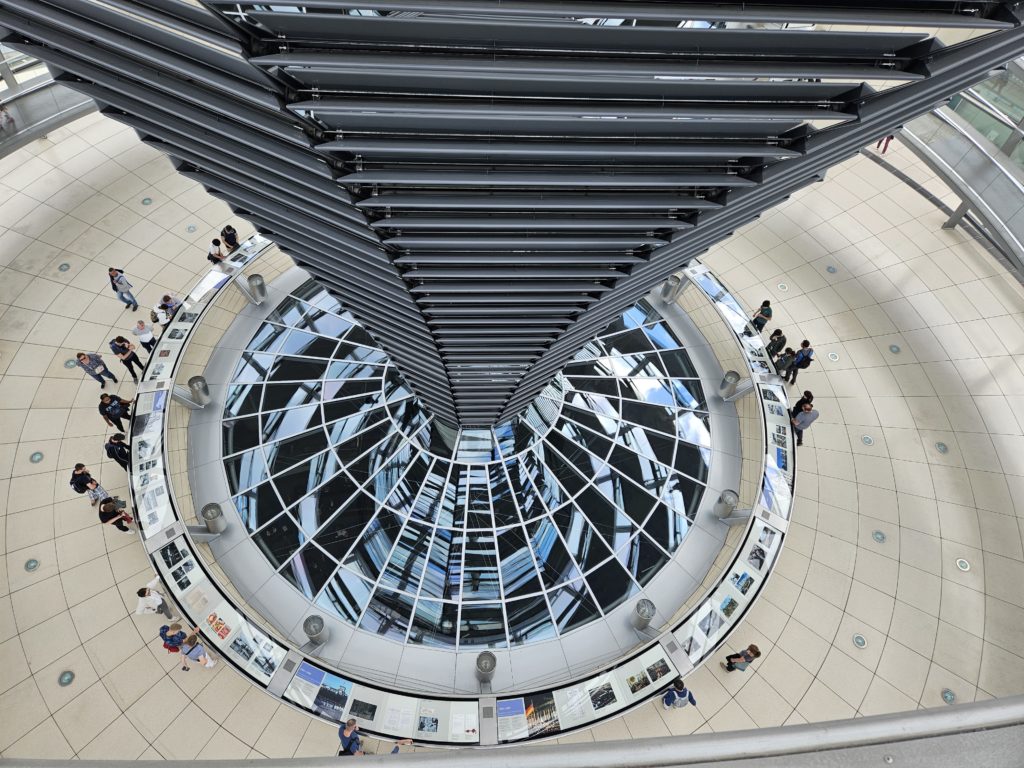
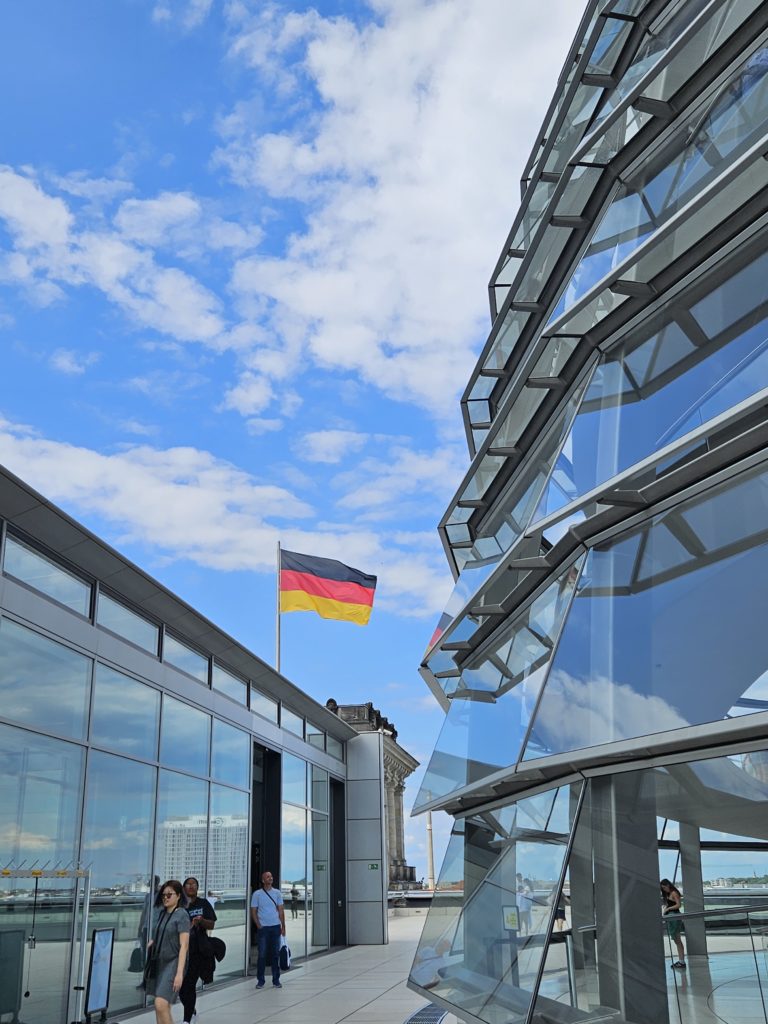
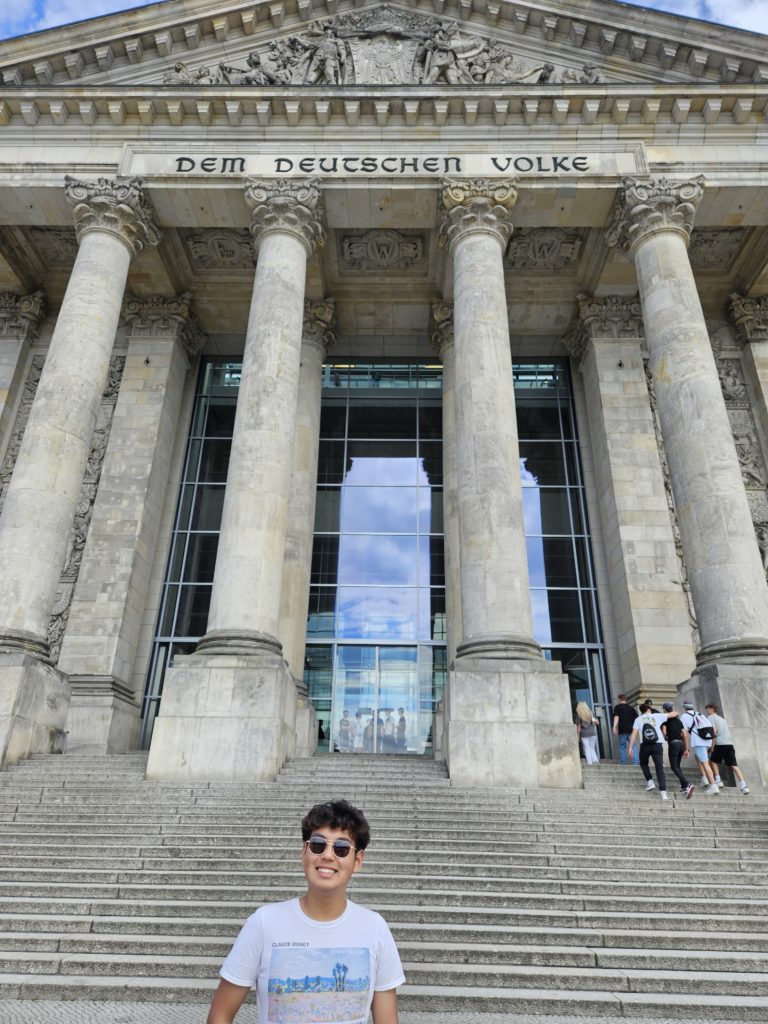
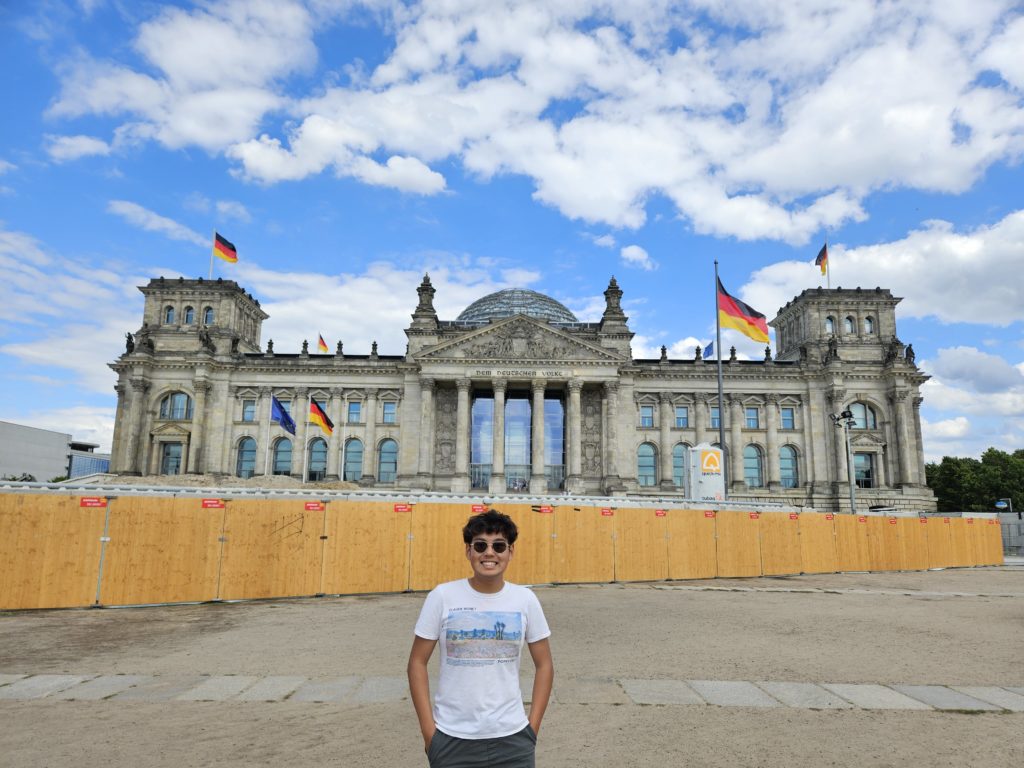
We also visited the Pergamonmuseum – we were so lucky, because the museum will shut down for renovation for years to come (scheduled to reopen in 2027). Berlin has many great museums to check out, where the museums are concentrated in one area of the city called the Museum Island (“Museuminsel”).
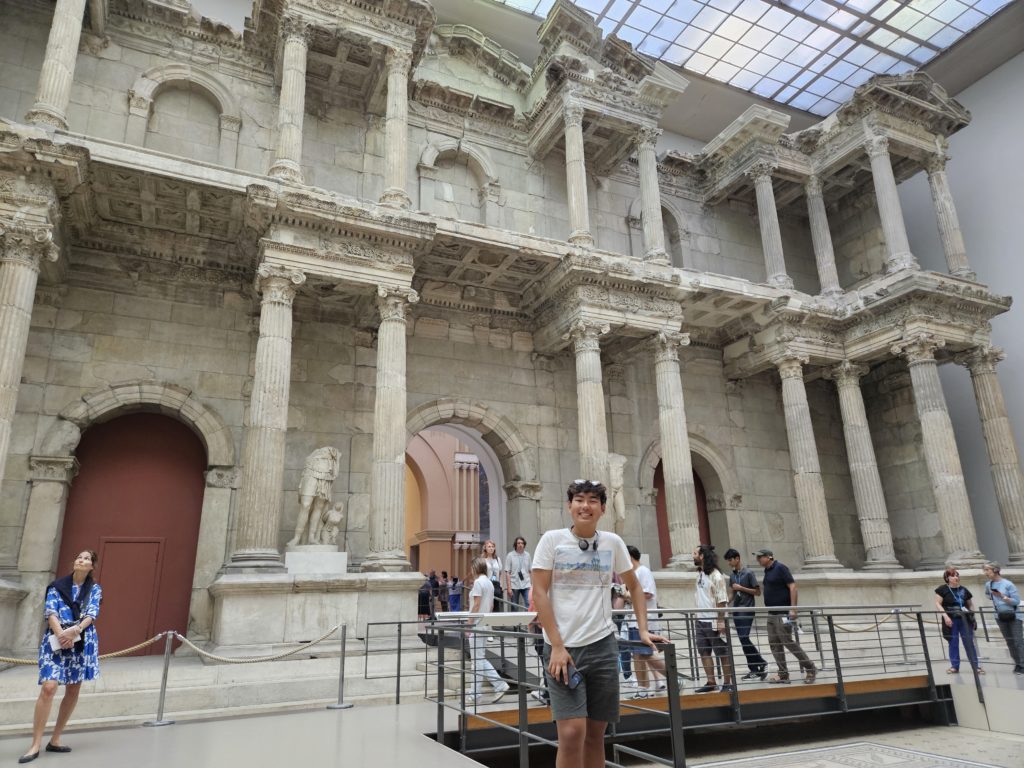
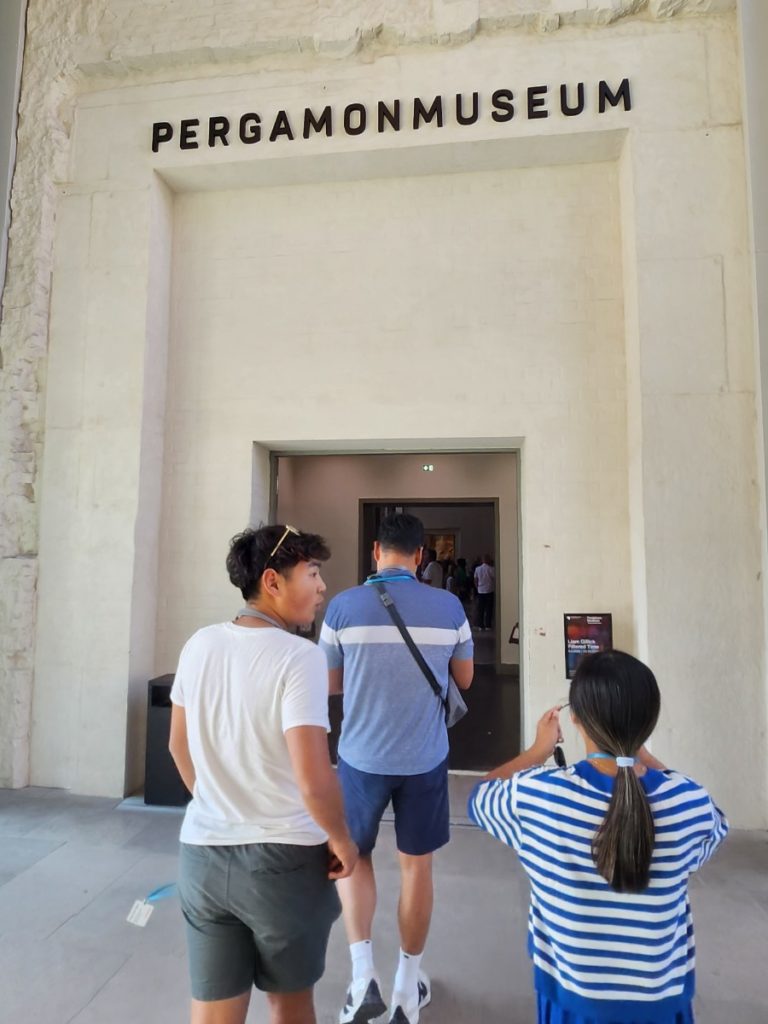
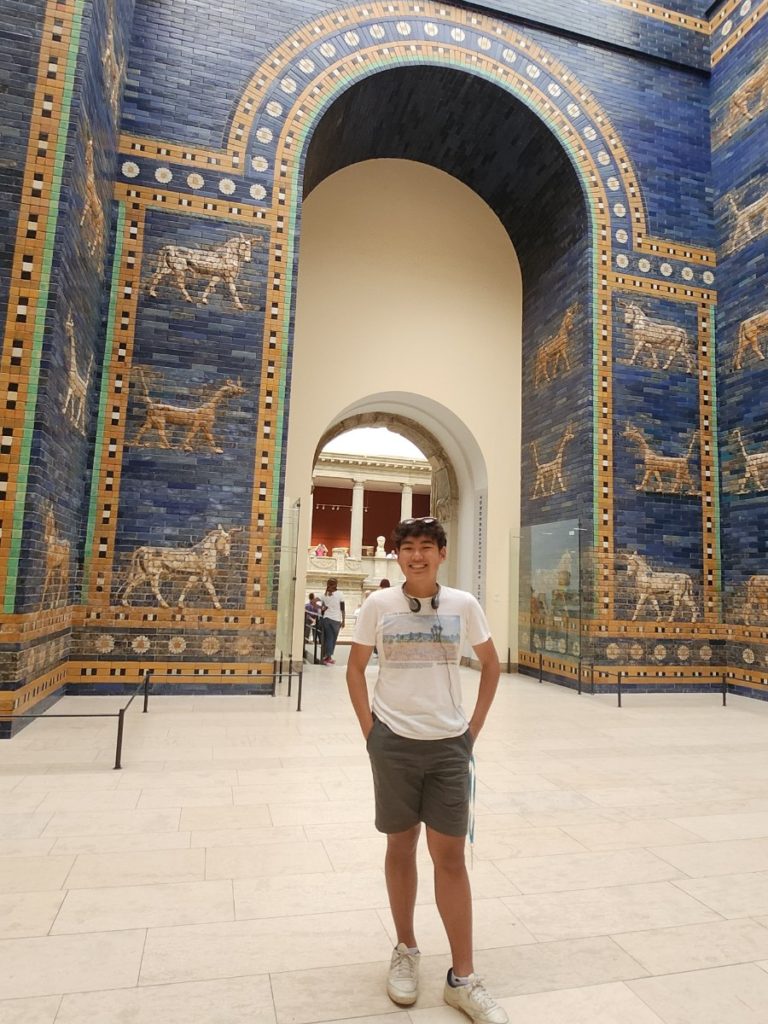
As a Korean, I could deeply relate to the German history of division and reunification. Korea is still divided, for the same reason why Germany had been divided; the world war and different interests of other powerful countries. Germans achieved reunification; it’s now Korea’s turn. Much like the collapse of the Berlin Wall happened rather unexpectedly, we hope the Korean reunification will also be achieved one day unexpectedly.

